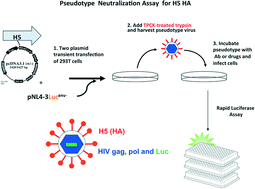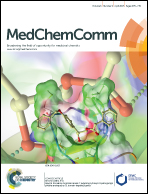Inhibition of influenza H5N1 invasion by modified heparin derivatives†
Abstract
Influenza remains a serious health threat, with resistance to frontline drugs becoming more common, and new treatments urgently sought. One strategy for the inhibition of the attachment of influenza to host cells is to employ chemically modified heparins, capable of effectively competing with the multivalent interactions involved. In an assay of H5N1 influenza viral invasion comprising a H5 pseudotyped HIV system, selective removal of the sulfate groups from heparin (IC50 ~22 × 10−9 g mL−1) allowed the retention of inhibitory activity in the products (IC50 ~4 × 10−9 g mL−1) while significantly reducing their anticoagulant activities. Chemically modified anionic polysaccharides offer a potential source of effective inhibitors of viral attachment, which are suitable for further optimisation.


 Please wait while we load your content...
Please wait while we load your content...